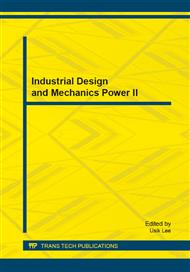p.93
p.98
p.102
p.110
p.114
p.120
p.124
p.129
p.136
Statistical Energy Analysis of Fractional Derivative Model-Based Rubber Vibration Isolating System
Abstract:
The fractional derivative model and Coulomb friction model are introduced to describe the nonlinear characteristics of rubber isolators. Then the non-conservative coupling theory is used to calculate the statistical energy analysis (SEA) parameters of a typical non-conservative coupling system formed by two square plates and a rubber isolator. Numerical results are compared with those obtained by using the traditional viscous damping model, which shows that higher accuracy can be obtained by using the fractional derivative model in high-frequency band.
Info:
Periodical:
Pages:
114-119
Citation:
Online since:
October 2013
Authors:
Price:
Сopyright:
© 2013 Trans Tech Publications Ltd. All Rights Reserved
Share:
Citation:


